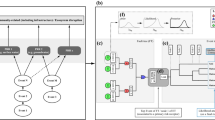Abstract
The Tono uranium deposit (Gifu Prefecture, central Japan) was formed about 10 million years ago and available evidence suggests that this deposit has remained stable, i.e. uranium has not migrated significantly since then. Substantial field and modeling work is being carried out to better understand the hydrogeological and geochemical processes affecting or governing uranium transport and immobilization in and around the Tono uranium deposit. A systems analysis approach has been applied to the Tono deposit natural analogue project. Application of a systems analysis approach to a generic research project is novel and is different from prevailing applications. Previous applications of a systems analysis approach have been principally concerned with performance and safety assessments for radioactive waste disposal. The systems analysis approach provides a convenient framework for this project, having been used in the Tono Natural Analogue Project (TAP) to:
-
• define the system to be studied
-
• identify features, events and processes (FEPs) associated with this system
-
• identify external factors (EFEPs) which are likely to have influenced the Tono area or study site or uranium deposit
-
• define interactions between pairs of FEPs; and
-
• develop credible scenarios for evolution of the area or uranium deposit.
The results from the systems analysis approach allow us to:
-
• develop possible scenarios for how the Tono area or study site evolved
-
• evaluate uncertainty and how it propagates backwards in time
-
• link field characterization data with predictive modeling, and
-
• identify gaps in data and, hence, identify additional characterization needs.
Similar content being viewed by others
References
Y. Ochiai, M. Yamakawa, S. Takeda and F. Harashima, CEC Nuclear Science and Technology Series, EUR 11725, pp. 126–138, 1989
M. Yamakawa, Proc. Third International Symp. Advanced Nuclear Energy Research, Mito, Japan, March 1991, pp. 150–158.
C. Sato, Y. Ochiai and S. Takeda, in (B. Côme and N.A. Chapman eds. CEC Nuclear Science and Technology Series EUR 11037, pp. 462–472, 1987
N. Katayama and S. Hirono, IAEA-SM-183/11, pp. 437–452, 1974
K. Doi, S. Hirono and Y. Sakamaki, Economic Geology 70, pp. 628–646, 1975
Y. Yusa, K. Ishimaru, K. Ota and K. Umeda, Proc. NEA Workshop, Paris, France, November 1992, pp. 117–146.
Y. Sakamaki, IAEA-TECDOC-328, pp. 135–154, 1985
W.M. Miller, W.R. Alexander, N.A. Chapman, I.G. McKinley and J. Smellie, Natural Analogue Studies in the Geological Disposal of Radioactive Wastes. Studies in Environmental Science 57, Elsevier, Amsterdam, London, Ney York and Tokyo.
R.M. Cranwell, R.V. Guzowski, J.E. Campbell and N.R. Ortiz, SandIA80-1429, NUREG/CR-1667, 1990
B.W. Goodwin, M.E. Stephens, C.C. Davison, L.H. Johnson and R. Zach, AECL-10969, 1994
N.A. Chapman, J. andersson, P. Robinson, K. Skagius, C.O. Wene, M. Wiborgh and S. Wingefors, SKI Technical Report No. 95:26, 1995
T. Yoshikawa, Bull. Dept. Geogr. Fac. Sci. Univ. Tokyo, No. 6, pp. 1–14, 1974
Author information
Authors and Affiliations
Rights and permissions
About this article
Cite this article
Stenhouse, M.J., Arthur, R., Ota, K. et al. Application of the Systems Analysis Approach to a Natural Analogue Project. MRS Online Proceedings Library 713, 86 (2001). https://doi.org/10.1557/PROC-713-JJ8.6
Published:
DOI: https://doi.org/10.1557/PROC-713-JJ8.6




